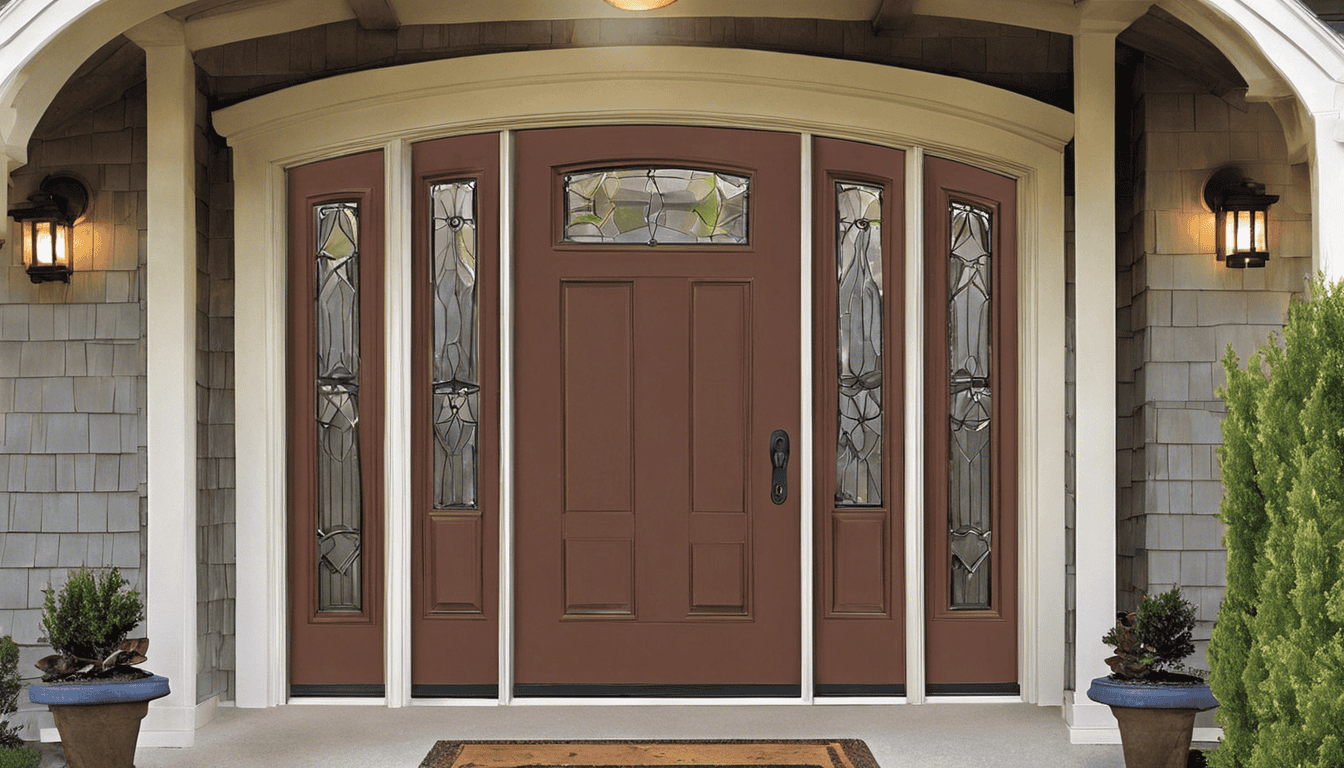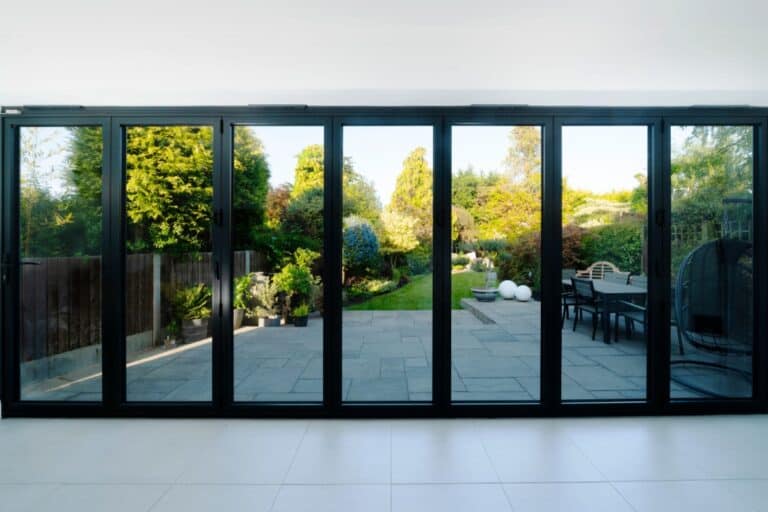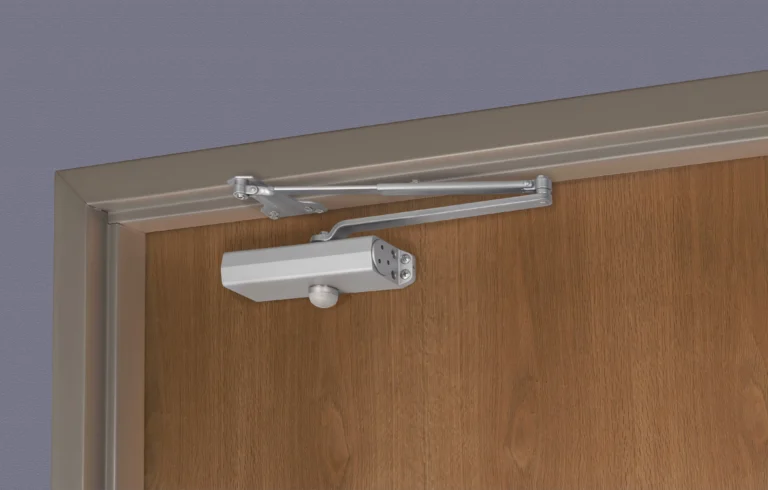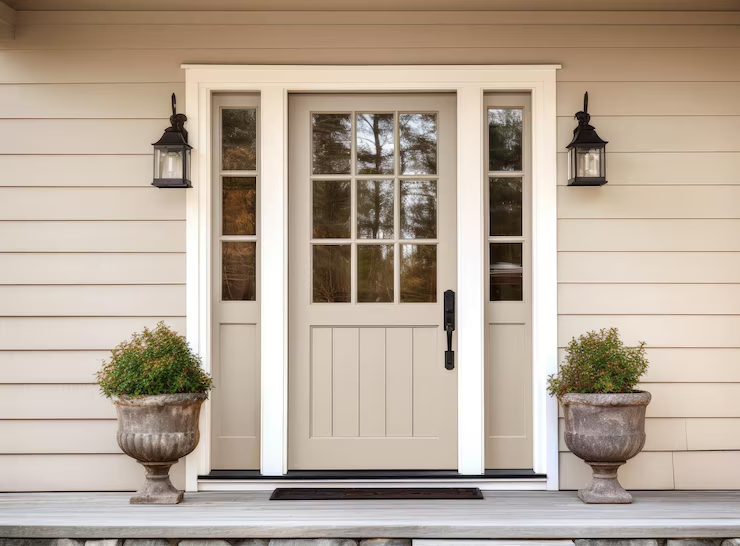Understanding the Importance of Exterior Door R-Value
When we think of making our homes more energy-efficient, we often focus on improving insulation in walls, attics, or upgrading windows. However, one area that’s frequently overlooked is the exterior door. The R-value of an exterior door plays a significant role in determining how energy-efficient your home is. This measurement helps us understand how well the door prevents heat loss or gain, impacting not only your comfort but also your energy bills. In this article, we will explore what the exterior door R-value means, why it matters, the factors that influence it, and the key benefits of investing in high R-value exterior doors.
What is Exterior Door R-Value?
Understanding the Importance of Exterior Door R-Value
When we think of making our homes more energy-efficient, we often focus on improving insulation in walls, attics, or upgrading windows. However, one area that’s frequently overlooked is the exterior door. The R-value of an exterior door plays a significant role in determining how energy-efficient your home is. This measurement helps us understand how well the door prevents heat loss or gain, impacting not only your comfort but also your energy bills. In this article, we will explore what the exterior door R-value means, why it matters, the factors that influence it, and the key benefits of investing in high R-value exterior doors.
What is Exterior Door R-Value?
The R-value is a measure of thermal resistance, which tells us how well a material can resist heat flow. In simple terms, it measures how effective a material is at insulating. For exterior doors, the R-value quantifies how well the door can prevent heat from escaping during winter or keep cool air from leaking out during summer. A higher R-value means better insulation, which directly translates to greater energy efficiency.
Doors with higher R-values are designed to minimize the impact of outdoor temperatures on the indoor environment. This is particularly crucial in regions with harsh weather conditions—whether it’s the sweltering heat of summer or the biting cold of winter. A door with a low R-value will allow more heat to pass through, leading to fluctuating indoor temperatures, increased energy use, and higher heating or cooling bills.
Why is Exterior Door R-Value Important?
The exterior door is one of the most significant points of energy loss in a home. According to the U.S. Department of Energy, doors and windows can account for up to 30% of a home’s energy loss. This means that if your door has a low R-value, you could be wasting significant amounts of energy and money every month.
In homes with low-insulation doors, conditioned air—whether heated or cooled—can escape, making your HVAC system work harder to maintain the desired temperature. This not only increases utility bills but also puts unnecessary strain on your heating and cooling systems. By choosing a door with a higher R-value, you improve the insulation of your home’s envelope, helping to reduce this energy loss and save on energy costs.
Additionally, a high R-value door enhances the comfort of your home. It helps to maintain a more consistent indoor temperature and prevents drafts, making your living spaces more comfortable year-round. This becomes especially important if you live in an area with extreme temperature swings, as a high R-value door will minimize the effect of those outdoor temperatures.
Factors Affecting Exterior Door R-Value
Several factors contribute to the R-value of an exterior door, and understanding these can help you make more informed choices when upgrading or replacing your door:
1. Material of the Door
The type of material used in the door construction has a major impact on its R-value:
- Wood Doors: Solid wood doors tend to have lower R-values because wood is not the best insulator compared to other materials. However, doors made from engineered wood or those with insulated cores can offer better insulation.
- Steel Doors: Metal is generally not an insulator, but steel doors often have insulated foam cores that significantly boost their R-value.
- Fiberglass Doors: These tend to have some of the highest R-values because they are usually filled with polyurethane foam, which provides excellent insulation without sacrificing durability.
2. Door Design and Construction
A door’s design can significantly affect its insulating performance. Doors with multi-layer construction, where an insulating material is sandwiched between outer layers, often provide higher R-values. For instance, a steel or fiberglass door with a polyurethane core offers better insulation than a solid wood door.
Additionally, some doors feature built-in weatherstripping or thermal breaks, which reduce the transfer of heat and improve the door’s overall thermal performance.
3. Installation Quality
Even the best exterior door can perform poorly if it’s improperly installed. Poor installation can lead to gaps, air leaks, and compromised insulation, negating the benefits of a high R-value door. Proper weatherstripping and sealing around the door frame are essential to maximize the door’s insulation potential. Ensuring your door is installed correctly will help maintain its energy efficiency.
Benefits of High Exterior Door R-Value
1. Energy Savings
One of the most significant benefits of a high R-value door is the reduction in energy consumption. A well-insulated door keeps the indoor temperature stable, reducing the need for excessive heating or cooling. This translates to lower energy bills. In fact, the U.S. Environmental Protection Agency states that homeowners can save up to 15% on heating and cooling costs by upgrading to energy-efficient doors and windows.
2. Improved Indoor Comfort
A high R-value door helps maintain a consistent indoor temperature. It prevents cold drafts in the winter and keeps the hot summer air outside, creating a more comfortable living environment. This consistency not only makes your home more enjoyable but can also have positive effects on your health, especially for those sensitive to temperature fluctuations.
3. Environmental Impact
Choosing a door with a high R-value also benefits the environment. By reducing the energy required to heat and cool your home, you’re effectively lowering your carbon footprint. This contributes to the global effort to reduce energy consumption and greenhouse gas emissions, aligning your home with sustainable practices.
4. Enhanced Durability
High R-value doors are often constructed using advanced materials and design techniques that increase their longevity. These doors are typically more resistant to weather-related wear and tear, meaning they’ll require less maintenance and last longer than lower-quality options. This durability is especially important for doors exposed to extreme weather conditions.
Conclusion
The exterior door R-value is a critical factor in determining its energy efficiency and performance. Exterior door R-value can drastically reduce energy loss, enhance indoor comfort, and save you money on your utility bills. Whether you’re upgrading your existing door or choosing one for a new home, paying attention to the exterior door R-value ensures that your home is well-insulated and protected from the elements.
Not only do high R-value doors offer practical benefits, such as reducing energy costs, but they also contribute to a more sustainable future by lowering your home’s energy consumption. So, next time you’re considering an upgrade, don’t forget to prioritize the R-value of your exterior door—your wallet, your comfort, and the environment will thank you.






